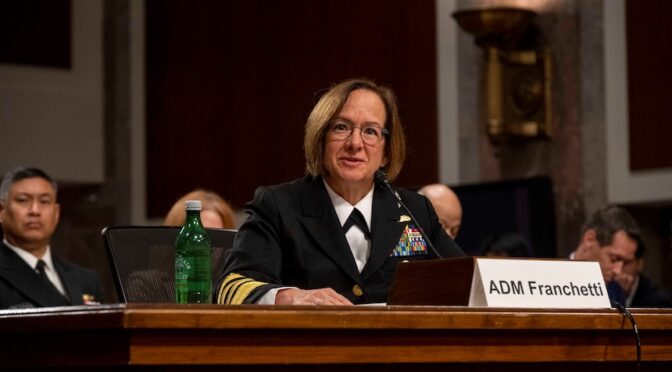By CDR Paul Nickell
The Get Real Get Better initiative has been a near-term effort to increase the effectiveness of how Sailors do things, to include problem-solving – which could be described as the science of warfighting. To holistically improve Sailors, the “Navy-wide culture renovation” must also inculcate learning strategies – the art of warfighting. A supplement or revision to NDP-1, tentatively entitled Naval Warfighting, would accomplish this by integrating the art and science of warfighting into an enduring doctrine on learning strategies.
China and Russia both view the focus of modern warfare as being cognitive dominant, which is described as a positive outcome from the friction between intuition and expertise, or art and science. A revised NDP-1, modeled on the Marine Corps FMFM-1 Warfighting, would offer structured ways to think and learn about naval warfare. It would codify the values and skills of continuous learning, and provide guidance on cognitive development for all echelons. In this way, a revised NDP-1 will go beyond teaching warfare principles as an instrument of national power. Indeed, it would provide a timeless model for how to approach complex warfighting challenges with specific learning strategies and campaigns.
Currently, NDP-1, Naval Warfare, is insufficient to generate an understanding of the central premise of naval forces’ existence – warfighting. It also lacks foundational organizational concepts and individual behavioral strategies such as feedback loops. These strategies and concepts are needed to help individuals and organizations navigate the learning challenges that are at the core of strengthening warfighting skill.
A revised NDP-1 would be the doctrine that guides Sailors’ learning efforts in three essential ways. First, cultivate self-awareness and knowledge about how cognitive biases affect information processing and meaning-making in a warfighting environment. Second, practice broad, holistic decision-making skills that are willing to challenge prevailing assumptions and established practices. Lastly, employ decision frameworks and learning models when developing guidance and policies. All of these efforts would be grounded in warfighting, with an eye toward how to apply these principles to tactical and operational challenges.
Regardless of their quality, doctrinal publications may fall far short due to a lack of concrete incentives and directives that make sure personnel engage with the material. For a revised NDP-1 to have real impact, it can be made mandatory reading for warfare tactics instructors, war college faculty and students, fleet staffs, and other target audiences.
Some within the fleet have readily embraced Get Real Get Better’s call to action. But more can be done, especially to ground this campaign in warfighting. A revised NDP-1, focused on developing learning strategies for warfighting challenges, will help the Navy and its Sailors achieve a campaign of continuous learning. It will help strengthen the professional incentives that reward warfighting skill, and cultivate a more robust intellectual environment in the Navy, one that values diversity of thought, the questioning of ideas, and rapidly developing winning solutions.
Commander Paul Nickell is a PMBA student at the Naval Postgraduate School and a Senior Course student at the Naval War College. He is part of the naval aviation community having commanded a P-8A squadron, facilitated learning at the Navy’s Leadership and Ethics Command for future Major Commanders, Commanding Officers, Executive Officers, and Command Master Chiefs. His academic focus has been on organizational learning, vertical development, and executive coaching as foundational aspects for learning organizations.
Featured Image: NAVAL AIR STATION WHIDBEY ISLAND, Wash. (Aug. 1, 2023) – A P-8A Poseidon assigned to Patrol Squadron (VP) 46, the ‘Grey Knights,’ taxis into the combat aircraft loading area at Naval Air Station, Whidbey Island, Washington. (U.S. Navy photo by Mass Communication Specialist 2nd Class Jacquelin Frost.)




